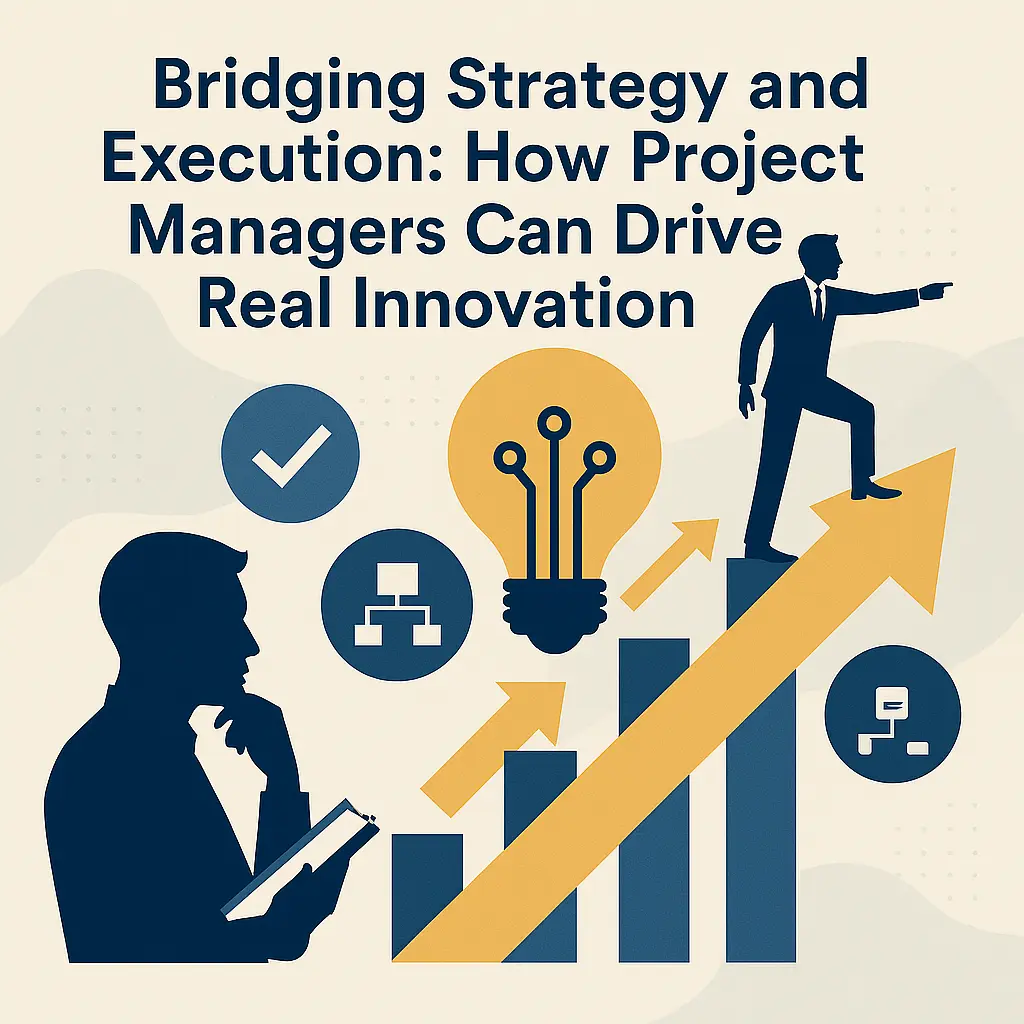Innovation often starts with bold ideas and strategic plans, but it lives or dies in execution. In many organizations, the disconnect between vision and reality is where great concepts fall short. That’s where project managers play a pivotal role — not just as task coordinators, but as innovation enablers who bring strategy to life.
The Forgotten Role of Project Managers in Innovation
When we talk about innovation, we often highlight visionary founders, creative directors, or R&D leads. But behind every successful innovation is someone who managed deadlines, coordinated cross-functional teams, aligned resources, and adapted quickly to unexpected changes — all while keeping the strategic goal in focus.
Project managers are uniquely positioned to bridge the gap between high-level strategy and ground-level execution. They connect people, clarify priorities, remove roadblocks, and ensure momentum without chaos. In complex projects, their work is essential to keeping innovation initiatives moving forward with purpose.
Why Strategy Often Fails Without Execution
According to Harvard Business Review, most strategic plans fail not because they’re flawed — but because they aren’t executed effectively.
- Goals aren’t translated into clear action plans
- Teams are misaligned or working in silos
- Resources are mismanaged
- Feedback loops are missing
Project managers solve these issues by building structure around strategy and enabling rapid, intelligent response to change. Without that connective layer, strategy is just potential — not performance.
5 Ways Project Managers Drive Innovation
1. Translating Strategy into Action
Project managers convert broad objectives into step-by-step roadmaps. They define milestones, identify dependencies, and assign ownership — ensuring no part of the vision is lost in ambiguity. Their clarity transforms vision into executable plans.
2. Creating Cross-Functional Alignment
Innovation often requires collaboration between engineering, marketing, product, finance, and customer-facing teams. PMs break down silos, align communication, and create shared understanding to avoid disconnects that delay progress. They foster trust between stakeholders by making everyone’s priorities visible and actionable.
3. Managing Risk Without Killing Creativity
Good project managers balance flexibility with discipline. They track timelines and budgets without micromanaging creativity. They create safe spaces for experimentation, while keeping scope under control. It’s about protecting resources while allowing room for ideas to breathe and evolve.
4. Building Feedback Loops
Iterative innovation depends on learning. Project managers facilitate retrospectives, performance reviews, and stakeholder feedback cycles. This allows teams to adapt faster and continuously improve. When feedback is built into the process, innovation becomes scalable and resilient.
5. Scaling What Works
When a prototype, process, or campaign succeeds, PMs scale it. They document workflows, streamline delivery, and set repeatable systems — turning one-off wins into sustainable results. Their ability to build infrastructure around success ensures long-term growth.
Case Study: Driving Innovation Through Agile Leadership
At a software company, a project manager led a cross-functional team to deliver a new AI-powered customer service tool. Early ideas came from product leadership, but the PM played a central role in bringing them to life — coordinating sprints, collecting user feedback, and aligning dev and business goals.
As a result, the tool launched ahead of schedule and helped reduce support ticket volume by 35% in its first quarter. The PM didn’t just manage tasks — they made innovation real by creating structure around uncertainty.
How Project Managers Create Culture
One often overlooked contribution of project managers is their influence on team culture. By modeling transparency, accountability, and calm under pressure, they help establish environments where people feel safe to take risks. They set expectations for how teams collaborate, how conflict is handled, and how wins and failures are processed.
In many cases, a PM’s leadership style becomes a cultural blueprint — shaping how innovation is approached across the organization.
Best Practices for Project Managers Who Want to Innovate
- Start with the “why”: Always link day-to-day work to strategic goals.
- Use agile methods: Break work into cycles, prioritize outcomes, and adjust plans as needed.
- Promote open communication: Encourage feedback, idea sharing, and honest updates across teams.
- Celebrate learning: Treat failures as data. Document what works and why.
- Lead with empathy: Understand team dynamics and support people under pressure.
Conclusion: Project Managers Are Innovation Catalysts
In today’s fast-moving landscape, strategy alone isn’t enough. Project managers are the bridge between the boardroom and the build room — ensuring big ideas are executed with clarity, accountability, and agility.
If you want innovation that scales, invests in process, and leads to impact — empower your PMs. They’re not just delivering projects. They’re delivering progress.
Related Links:





